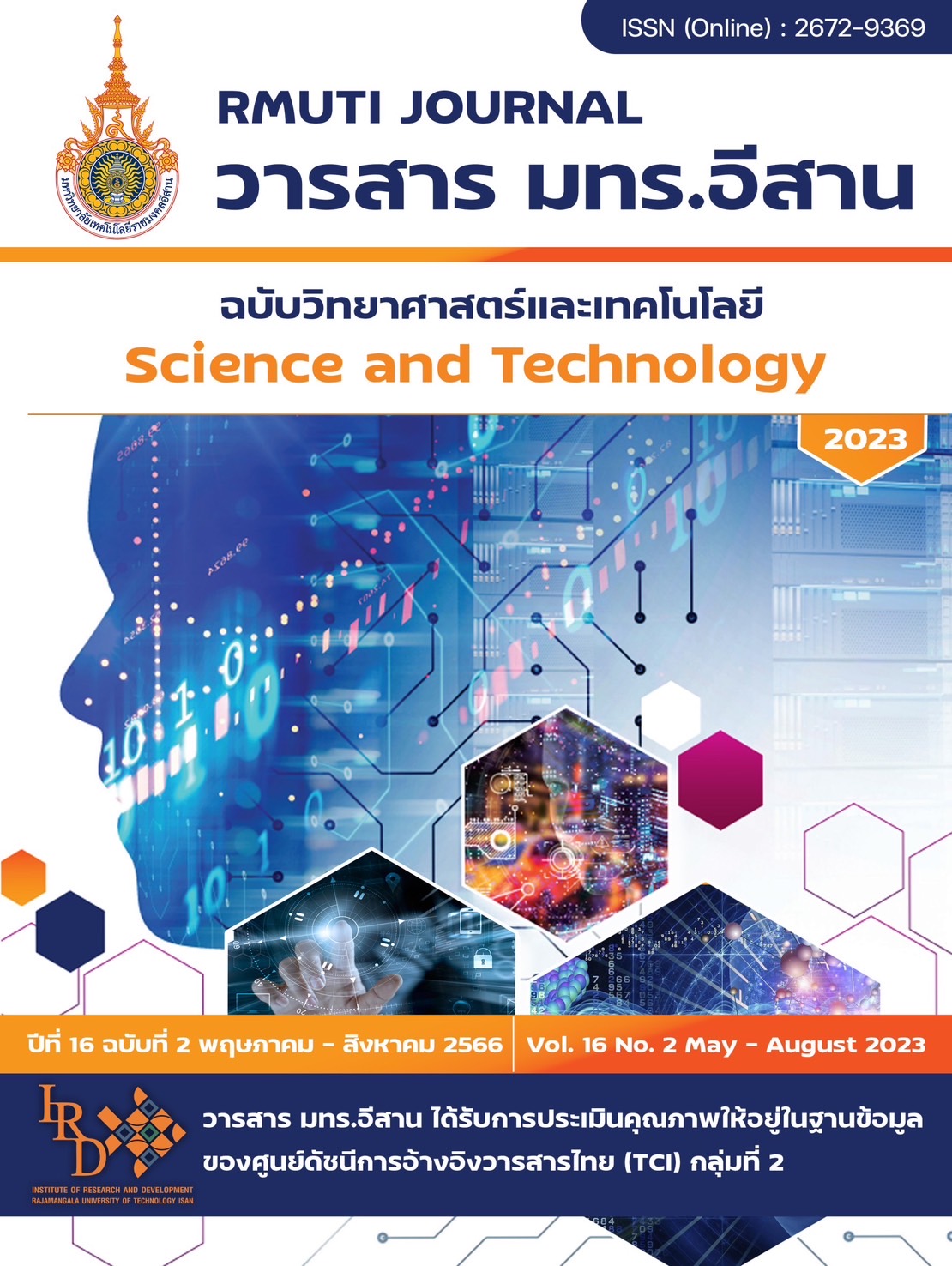The Effects of Different Alkalizing Agents on the Color Value and Color Fastness of Naturally Dyed Silk from Water Jasmine Leaves
Main Article Content
Abstract
This research aimed to study the effect of different alkalizing agents on the precipitation of color values and color fastness values in natural dyed silk from Water Jasmine Leaves. The ratio of alkalizing agents was Water Jasmine leaves: lye: tamarind juice 2:2:1 (weight/volume, w/v). The ingredients were mixed together and left to stand for 2 hours. It was found that the mean b* value of the blueness was -11.42 and the b* value of the dye obtained from the lime sediment was positive, which represented a yellow value. The mean value was 4.58. The h* analysis result showed the position of the color on the naturally dyed silk from Mok Phuang leaves. Silk dyed from red lime deposits had an h* value of 247.74 in the range of 180 to 270 degrees, indicating that the fabric color was in the green-blue range. The quality of natural dyes from Water Jasmine leaves from the different alkalizing agents was evaluated. The results showed that naturally dyed silk from Water Jasmine leaves that consisted of red lime sediment had color fastness level of 2 - 3, which indicated a good color fastness to washing.
Article Details

This work is licensed under a Creative Commons Attribution-NonCommercial-NoDerivatives 4.0 International License.
References
Chantarangsi, K. (2013). Design of Weaving Structure for Hand-Woven Indigo Dye Fabric. Case Study Group of Ban Don Koi Indigo-Dyed Weaving Group Phanna Nikhom District Sakon Nakhon, Province Graduate School, Srinakarinwirot University
Gokhale, S. B., Tatya, A. U., Bakliwal, S. R., and Fursule, R. A. (2004). Natural Dye Yielding Plants in India. R.C. Patel College of Pharmacy Shirpur, India
Maugare, T., Enaud, E., Sayette, A. D. L., Choisy P., and Legoy, M. D. (2002). Beta-Glucosidase-Catalyzed Hydrolysis of Indican from Leaves of Polygonum Tinctorium. Biotechnology Progress. Vol. 18, Issue 5, pp. 1104-1108. DOI: 10.1021/bp025540
Meipan, N. (2015). Silk Dyeing with Natural Dyes from Krachai Dam Rhizome. Master’s Thesis, Kasetsart University
Mongkolrattanasit, R., Klaijoi, C., ChangMuang, S., Sasitorn, N., ManaRungwit, K., Mahain, K., PhaisanTantiwong, N., Roongruangkitkrai, N., Chamnongkan, T., Wong Phakdi, W., and Tiyasri, S. (2017). New Natural Indigo Dyeing Guide on Silk and Cotton Yarns Commercially. Kor-Hor Company Limited. Bangkok


